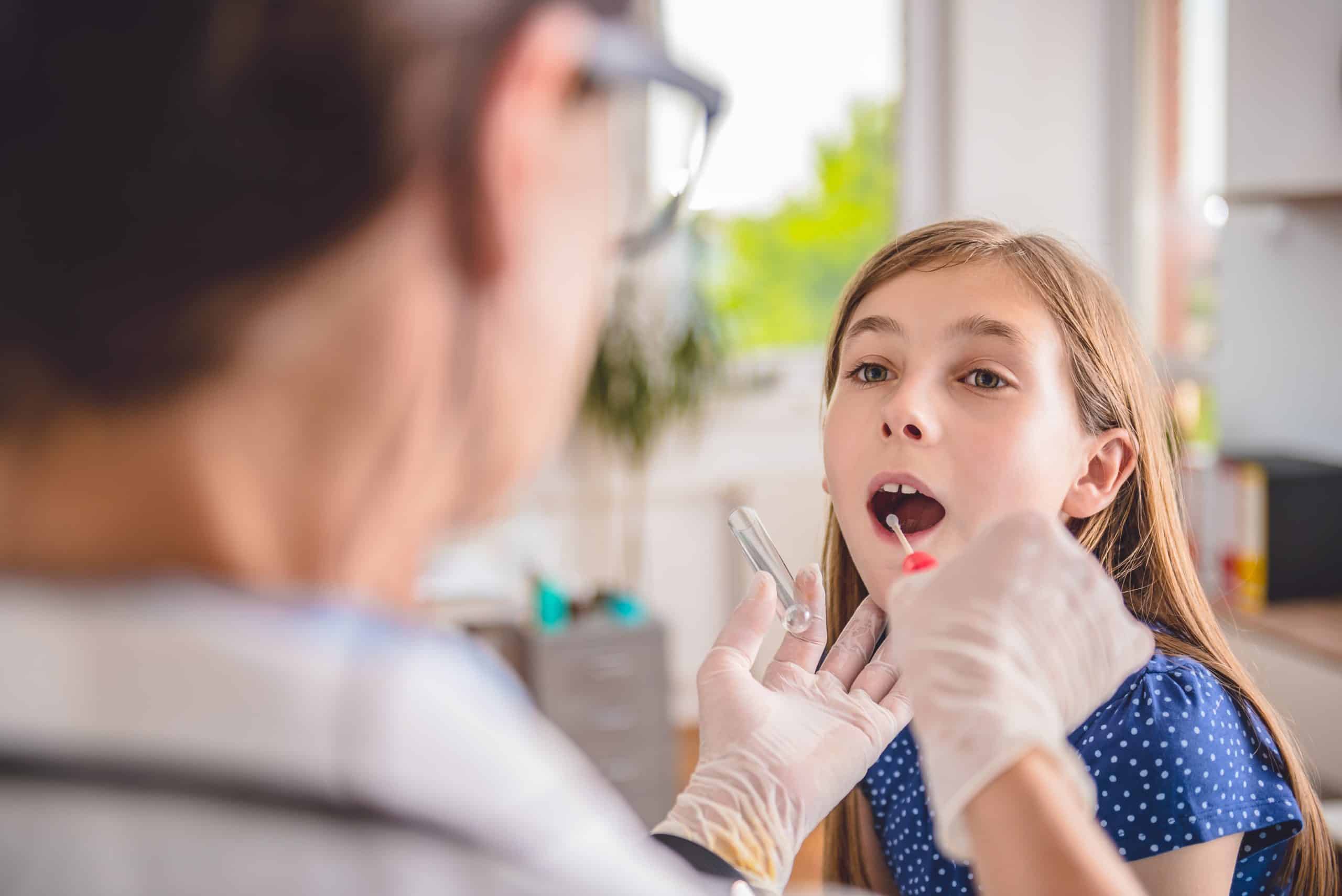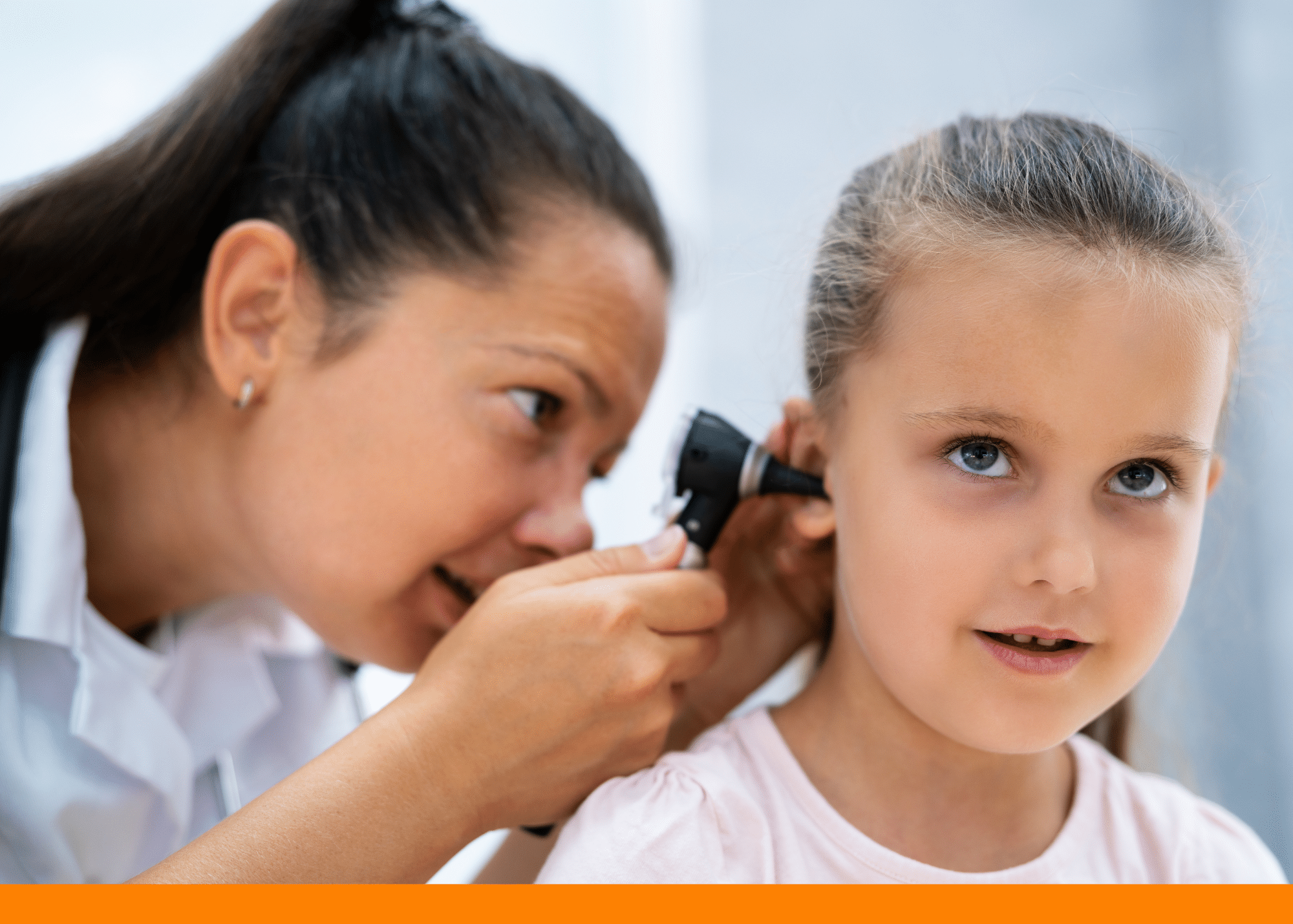
Strep’s having a party!
Elizabeth A.S. Brooke, M.D., FAAP
At least that’s what I’ve been telling parents for a couple of months now. I’ve diagnosed at least 2 or 3 patients each day I’ve worked with the illness. I think my personal best is diagnosing 7 cases of strep throat in one day.
So, what is strep? And why do we care about it?
Strep throat is classically seen in school-aged kids to teenagers. It’s considered rare in adults and anyone younger than age 3, unless they are living with a relative who was recently diagnosed with the illness. Adults are susceptible and are at risk of getting it if they work closely with kids.
Strep throat is caused by a bacteria called Streptococcus pyogenes, also known as Group A Strep. It is a common bacteria we find on our skin and in our mouth and nose and it can cause a variety of infections of the ear, skin, throat, and other body sites.
Although there are several strands of strep, we only worry about Group A strep because this bacteria can cause acute rheumatic fever. This was prevalent in the U.S. decades ago and many older adults may have had this illness. This is a complication of strep that occurs a few weeks after the body has cleared the infection. The body’s immune system confuses proteins located on some of our organs with those found on strep and attacks those organs. Organs that can be affected include the heart, muscles, joints, skin, and central nervous system. When the U.S. began to regularly treat Group A strep, the incidence of acute rheumatic disease decreased significantly. Acute rheumatic disease still exists in developed countries and has been reappearing in areas of Europe.
So, what does strep look like?
Well, that’s the tricky part. It can look a lot like other causes of sore throat, known medically as pharyngitis. Many viruses can cause a sore throat with redness and even white spots (exudates) on the tonsils. Pharyngitis caused by viruses will more likely present with cough, runny nose, mouth ulcers, red eyes, and hoarseness.
So how do clinicians tell them apart? I’m fond of saying that you can diagnose just about everything with a good history and physical exam. We use testing to confirm our suspicions or help differentiate between other possible illnesses. Some clinicians will use risk calculators to help determine the likelihood of the illness and then decide to test or to proceed to treat.
Signs and symptoms of strep pharyngitis are classically sore throat, fever, and swollen lymph nodes. Petechiae, or red dots, are often seen on the roof of the mouth and tonsils. Tonsils may be swollen with white patches, but not always. Younger children may have respiratory symptoms of runny nose, fever, irritability, and lack of appetite. This is known as streptococcosis.
But these signs and symptoms are not always present. There have been kids coming into Urgent Care for Children with no fever or no sore throat. Some kids have only presented with abdominal pain or headache. I’ve seen several cases of scarlet fever, which is an illness where strep causes a classic rash that is described as sandpaper-like. It does not itch or hurt, but it is pretty striking and is seen first on the trunk before spreading to the extremities and face.
So your child has strep throat. Now what?
We treat with antibiotics! The most common is amoxicillin. You may also see clinicians use penicillin, amoxicillin + clavulanic acid, cephalexin, azithromycin, clindamycin or cefdinir. It is also important for kids to remain home until they are fever free and have been on antibiotics for 24 hours. We usually recommend switching out toothbrushes around day 3 or 4 of antibiotic treatment to prevent autoinfection.
A National Increase in Cases of Strep
The Center for Disease Control and Prevention (CDC) is looking into an increase in invasive group A strep (iGAS) infections among children in the United States. It is recommended that you seek medical care quickly if you notice any signs or symptoms.
The best way to protect yourself from strep is frequent hand washing and coughing into your elbow (not your hands!) If you have any questions, we always encourage parents to check with your child’s pediatrician. If you have trouble getting an appointment or need help after hours, Urgent Care for Children is ready to care for your child. All of our providers are pediatric trained experts, you know your family will be in good hands.



